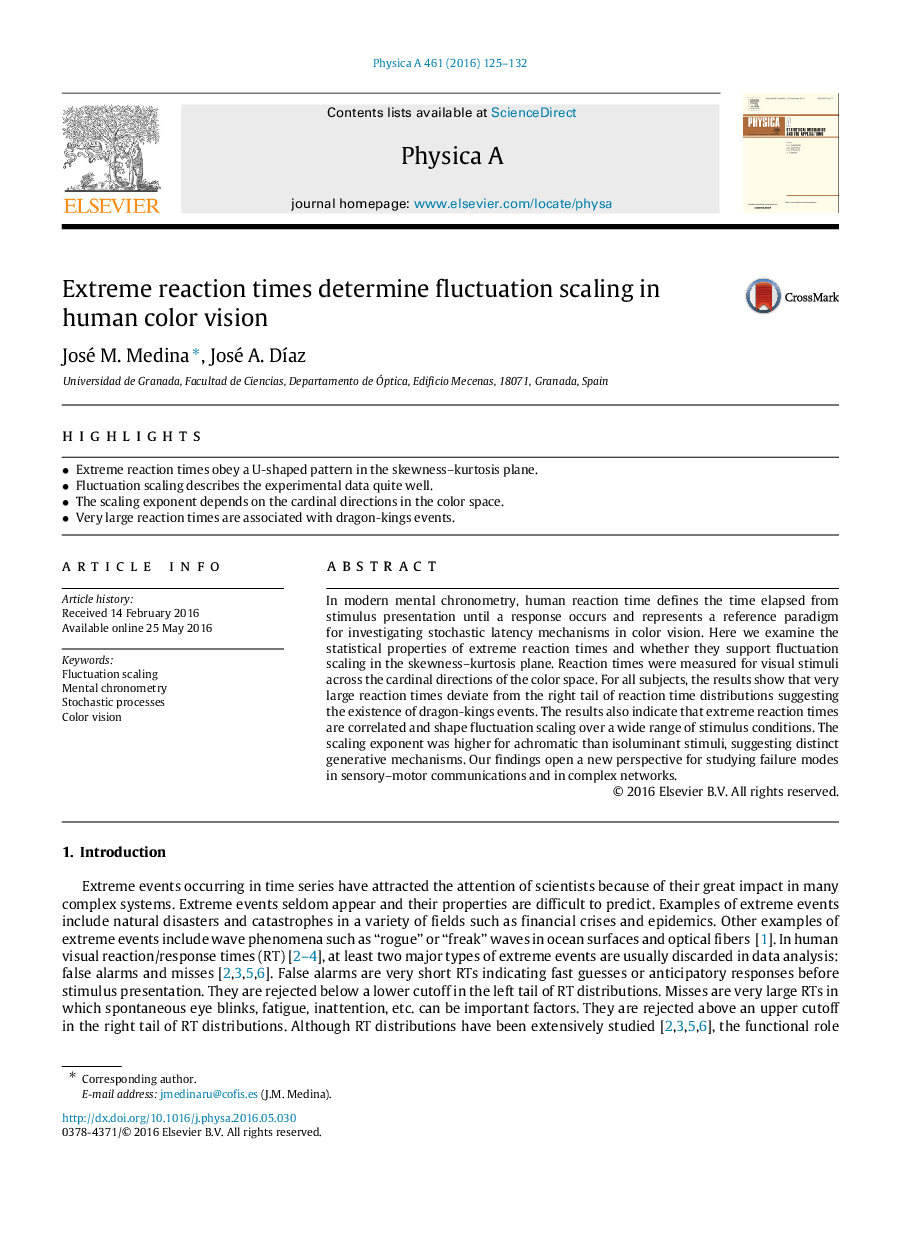| Article ID | Journal | Published Year | Pages | File Type |
|---|---|---|---|---|
| 7377117 | Physica A: Statistical Mechanics and its Applications | 2016 | 8 Pages |
Abstract
In modern mental chronometry, human reaction time defines the time elapsed from stimulus presentation until a response occurs and represents a reference paradigm for investigating stochastic latency mechanisms in color vision. Here we examine the statistical properties of extreme reaction times and whether they support fluctuation scaling in the skewness-kurtosis plane. Reaction times were measured for visual stimuli across the cardinal directions of the color space. For all subjects, the results show that very large reaction times deviate from the right tail of reaction time distributions suggesting the existence of dragon-kings events. The results also indicate that extreme reaction times are correlated and shape fluctuation scaling over a wide range of stimulus conditions. The scaling exponent was higher for achromatic than isoluminant stimuli, suggesting distinct generative mechanisms. Our findings open a new perspective for studying failure modes in sensory-motor communications and in complex networks.
Related Topics
Physical Sciences and Engineering
Mathematics
Mathematical Physics
Authors
José M. Medina, José A. DÃaz,
